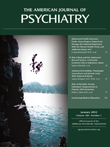Risk of Mortality Among Individual Antipsychotics in Patients With Dementia
Abstract
Objective:
The use of antipsychotics to treat the behavioral symptoms of dementia is associated with greater mortality. The authors examined the mortality risk of individual agents to augment the limited information on individual antipsychotic risk.
Method:
The authors conducted a retrospective cohort study using national data from the U.S. Department of Veterans Affairs (fiscal years 1999–2008) for dementia patients age 65 and older who began outpatient treatment with an antipsychotic (risperidone, olanzapine, quetiapine, or haloperidol) or valproic acid and its derivatives (as a nonantipsychotic comparison). The total sample included 33,604 patients, and individual drug groups were compared for 180-day mortality rates. The authors analyzed the data using multivariate models and propensity adjustments.
Results:
In covariate-adjusted intent-to-treat analyses, haloperidol was associated with the highest mortality rates (relative risk=1.54, 95% confidence interval [CI]=1.38–1.73) followed by risperidone (reference), olanzapine (relative risk=0.99, 95% CI=0.89–1.10), valproic acid and its derivatives (relative risk=0.91, 95% CI=0.78–1.06), and quetiapine (relative risk=0.73, 95% CI=0.67–0.80). Propensity-stratified and propensity-weighted models as well as analyses controlling for site of care and medication dosage revealed similar patterns. The mortality risk with haloperidol was highest in the first 30 days but decreased significantly and sharply thereafter. Among the other agents, mortality risk differences were most significant in the first 120 days and declined in the subsequent 60 days during follow-up.
Conclusions:
There may be differences in mortality risks among individual antipsychotic agents used for treating patients with dementia. The use of valproic acid and its derivatives as alternative agents to address the neuropsychiatric symptoms of dementia may carry associated risks as well.



